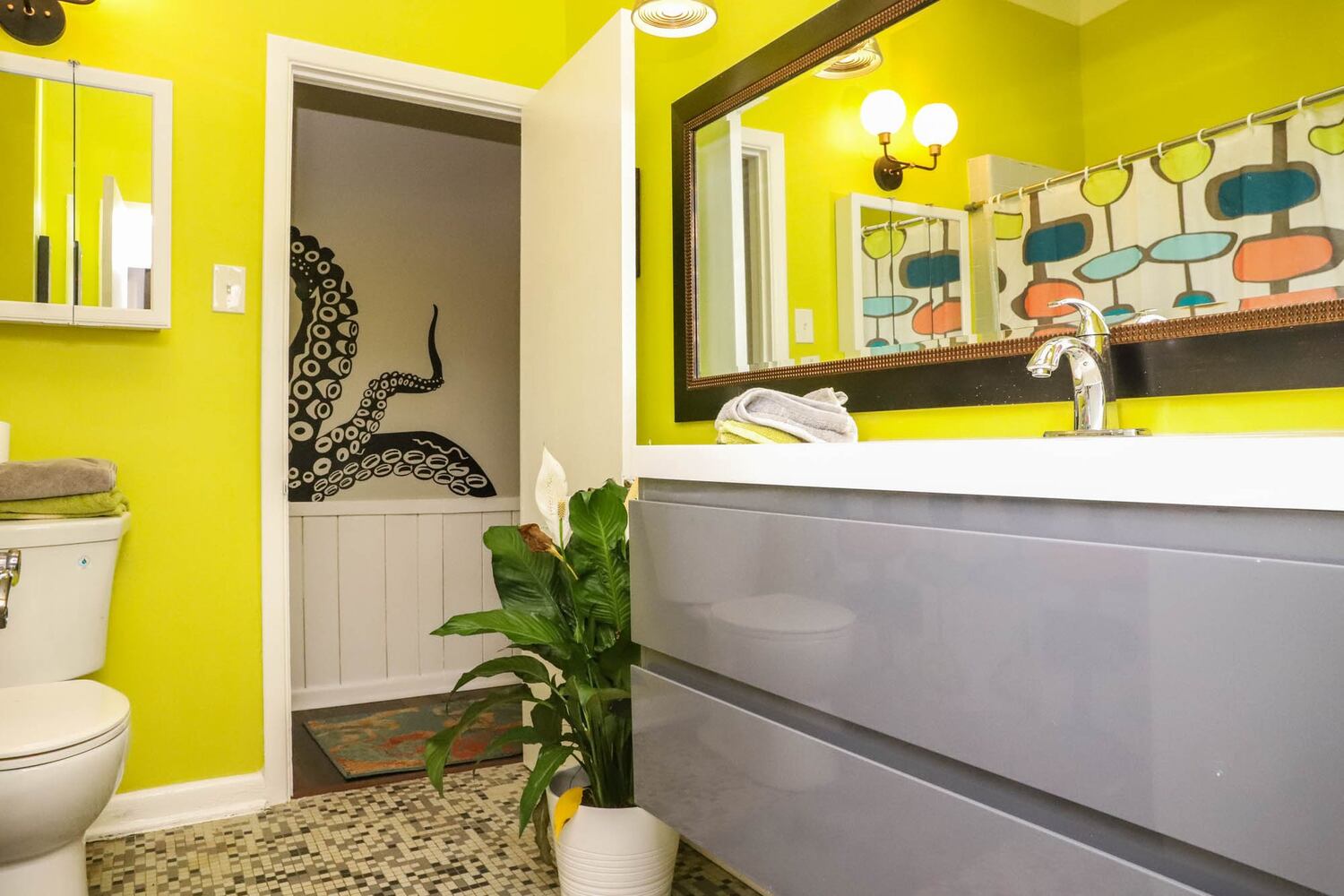For some, midcentury modern can be hard to define. Just the mention of the style invokes thoughts of legendary interior and furniture designers like Charles and Ray Eames and Isamu Noguchi. Midcentury modern is iconic for a reason but that doesn’t mean it’s impossible to create the style on your own.
Every week, the AJC’s Private Quarters takes you inside some of metro Atlanta’s most luxurious homes and this week is no different. This week’s Private Quarters focuses on the elements of midcentury modern and a throwback to some Atlanta homes that have absolutely nailed the style.
Whether you opt to work with an interior designer or you want to create this style on your own here are a few tips to get you started. At its core midcentury modern is all about strong shapes, clean lines, graphic arts and of course bright, and sometimes muted, pops of color.
“This style grew in America based on earlier styles such as Bauhaus which began in Germany, and the International style, which grew from the Bauhaus style in America,” according to The Spruce. “Technological advances led to production and development of a range of new materials making it possible to explore new textures and effects, colors and even new form.”
While the style gets its roots from the mid-1940s to about 1970, the look is constantly evolving and doesn’t have to encompass everything it did in the past.
Midcentury modern is a simple and minimalist style that emphasizes lots of open space and less clutter. There’s also a strong focus on graphics like bold patterns and geometric shapes, according to Houzz. The style is also very organic with natural wood being another key element.
When creating this style for your home, you will want to avoid creating a look that feels trendy, cluttered or overly ornamental. This look differs from contemporary style and has a lot less fluidity. Functionality is also a key element to any midcentury modern space and it’s a good idea to explore traditional and non-traditional materials, writes The Spruce.
However, the look is undeniably bold and a lot of that comes from an emphasis on color. Color plays an important role in midcentury modern spaces," writes Houzz. “These rooms draw inspiration from the iconic color palettes of midcentury designers — think of muted brights like tomato red, aqua blue and warm yellow."
Simple accessories are another way to incorporate midcentury modern into your home. Houzz recommends the following accessories for capturing this unique style:
- Rugs with graphic patterns
- Midcentury-style illustrations and typography
- Wallpaper or grasscloth wallcovering
- Sculptural pottery
- Statement-making pendant lights
- Plants in midcentury modern plant stands
About the Author
The Latest
Featured


















